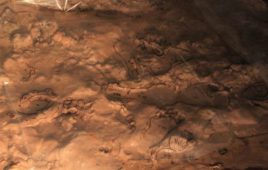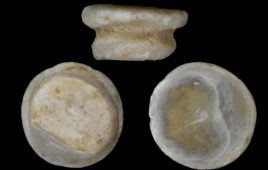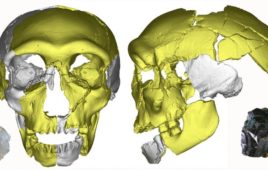A Univ.
of Florida study shows when two
flowering plants are crossed to produce a new hybrid, the new species’ genes
are reset, allowing for greater genetic variation.
Researchers say the study, to be published in Current Biology, could lead to a better
understanding of how to best grow more stable and higher yielding agricultural
crops.
“We caught evolution in the act,” said Doug Soltis, a
distinguished professor in UF’s biology department and study co-author. “New
and diverse patterns of gene expression may allow the new species to rapidly
adapt in new environments.”
The study shows the new plant species had relaxed
control of gene expression in its earliest generations. But today, after 80
years of evolution, control has been regained, allowing for the production of
different patterns of gene expression in different plants. The new species was
remade in UF greenhouses as well as studied in its natural habitat.
Researchers analyzed Tragopogon
miscellus, a species in the daisy family that originated naturally through
hybridization in the northwest U.S.
about 80 years ago. The new species formed when two species introduced from Europe mated to produce a hybrid offspring. The species
mated before in Europe, but the hybrids were
never successful. However, in America
something new happened—the number of chromosomes in the hybrid spontaneously
doubled, and at once it became larger than its parents and quickly spread.
“No one had extended this to natural populations and the
rapidity at which this can occur, and that’s pretty astonishing,” said Jonathan
Wendel, professor and chairman of the department of ecology, evolution, and
organismal biology at Iowa State Univ. “That species is such a beautiful model
for that.”
Hybridization with chromosome doubling is a prominent
mode of species formation and through this study scientists can better
understand how different plant groups originated.
“Understanding the impacts this process has on genome
structure may help understand how best to breed crops for high and stable
yields,” said study co-author Pat Schnable, director of the Center for Plant
Genomics at Iowa State Univ.
Before discovering their relaxed gene expression, the
team had expected the artificial hybrids to exhibit a combination of the
parents’ genes, said study co-author Pam Soltis, curator of molecular
systematics and evolutionary genetics at the Florida Museum of Natural History
on the UF campus.
“What we found was a surprise,” said lead author Richard
Buggs of Queen Mary Univ. of London, who worked on the study as a postdoctoral
researcher at the Florida
Museum. “It’s as if
hybridization and chromosome doubling hit a reset button on gene expression,
turning them all on—this could allow subsequent generations to experiment by
switching off different genes.”
The expression of the hybrid plant’s genes in all
tissues at all times allowed natural selection to shape what would emerge
generations later, Pam Soltis said. With this form of hybridization, there is
the opportunity for parental patterns to be equalized, as if the hybrid has a
fresh chance to exhibit a wide variety of genetic expressions over time.
Its two parent species, Tragopogon dubius and Tragopogon
pratensis, were introduced to the U.S. in the 1920s. The researchers
started making the artificial hybrids in 2004 and the plants take about one
year to grow from seed to being able to produce seeds, Pam Soltis said.
“Tragopogon
miscellus is unique because we actually know when it originated,” Pam
Soltis said. “Museum collections tell us when the parent species were
introduced, allowing us to infer the age of the hybrid species.”
The researchers studied 144 duplicated gene pairs from
the 40-generation-old Tragogogon
miscellus, whose common name is goatsbeard. Because the flower of the plant
only blooms for a few hours in the morning, it is often referred to as
“John-go-to-bed-at-noon.” It looks like a daisy except for being either purple
or yellow in color.
“The Soltises are showing at the genetic level how this
really important process of genome doubling generates new biological
diversity,” Wendel said. “This leads to new questions and the design of new
experiments that can help us understand the ecological and evolutionary
consequences of the genetic changes they’re observing.”




